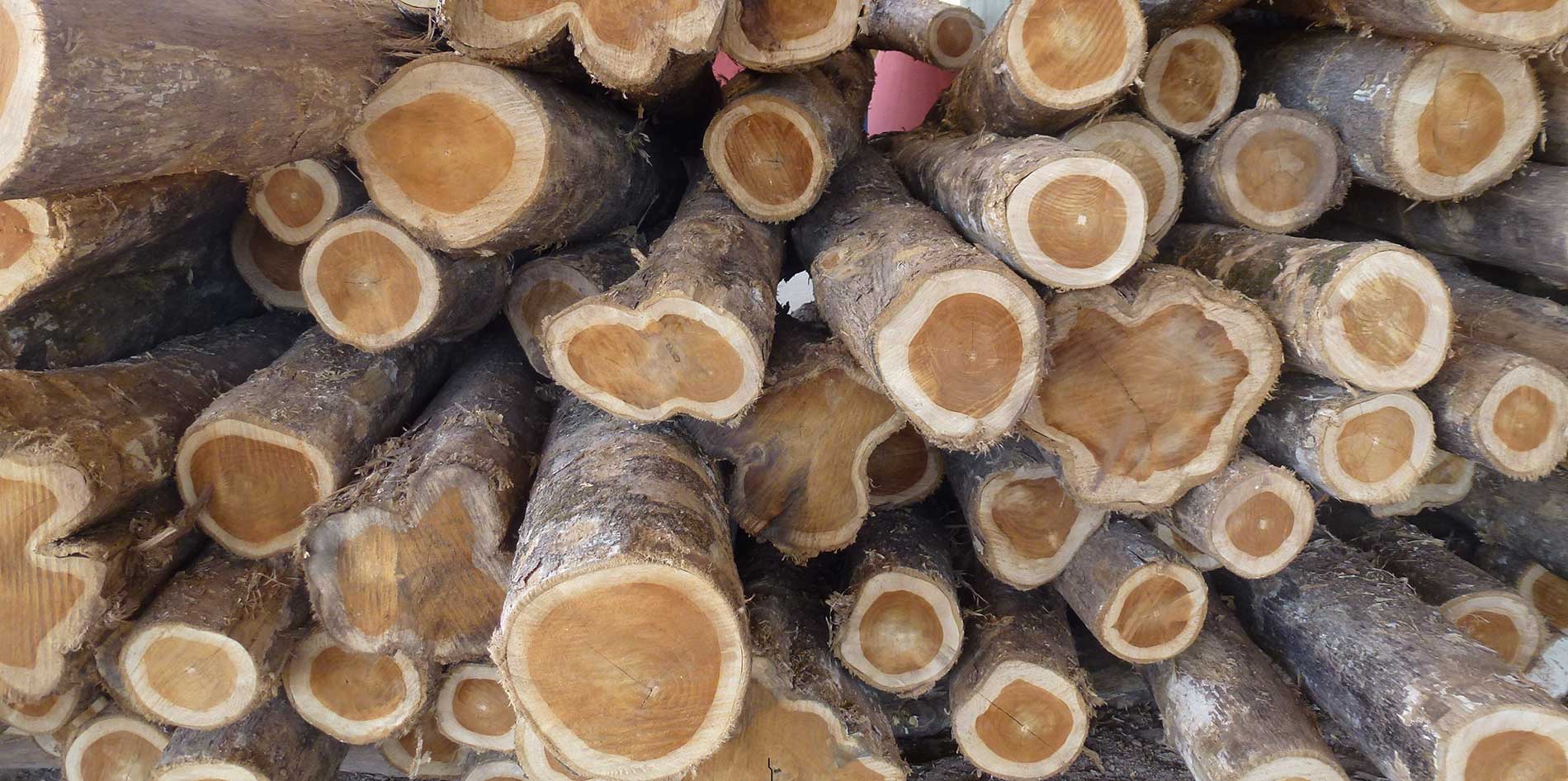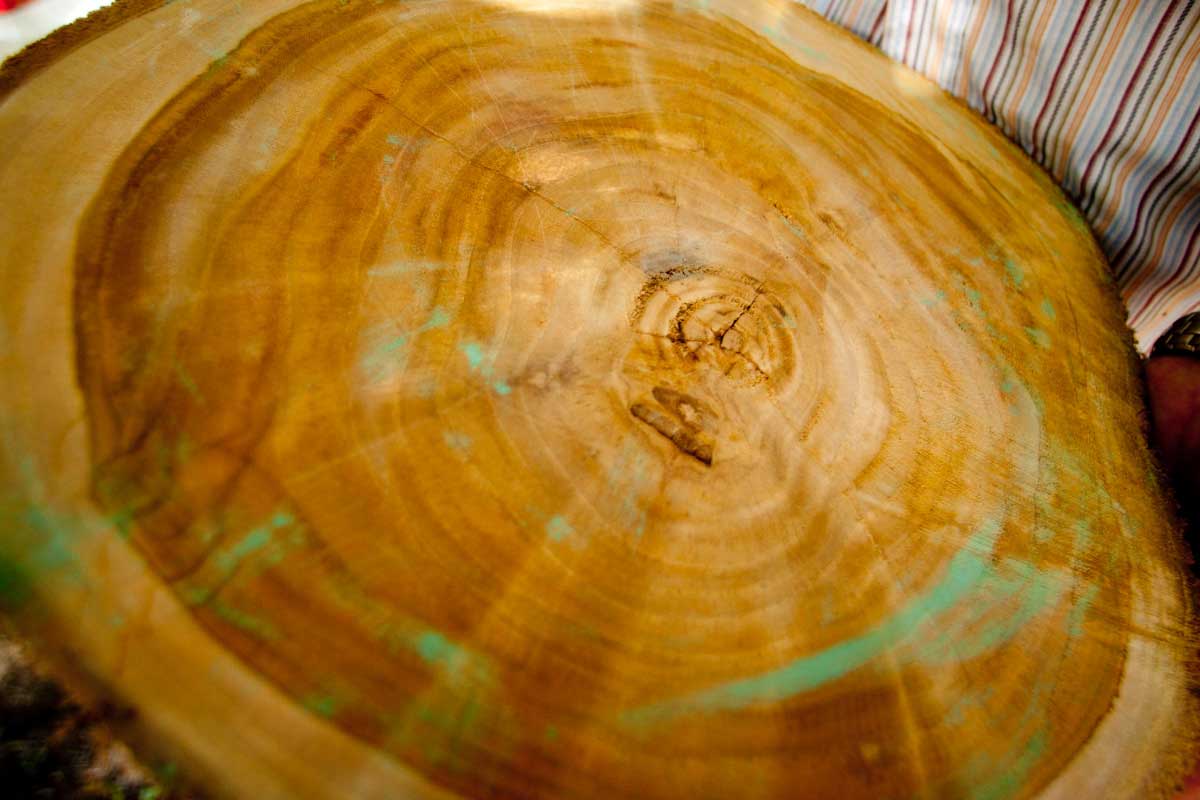Why All The Fuss About Heartwood Teak?

Getting the understanding a timber enthusiast would need
The differences between heartwood teak and sapwood teak
Heartwood and sapwood (white Teak) are both components of all trees and they have an intimate relationship with each other. In this section, we will discuss the distinctions between sapwood teak and heartwood teak in brief.
■ Sapwood teak, also known as white teak:
• It is the outer part of the teak tree, which is still growing.
• In wood furniture industry, sapwood teak is rated Grade C teak (the lowest rank). The grading is done based on factors which are knots and their location, appearance, and the kind of wood.
• The sapwood conducts water and nutrients, and also stores food to be sent up the trunk and all branches, which is essential for the growth of the tree. Therefore, sapwood's supporting function for it makes it a bit softer and not durable because it's water content and less of the natural oil.
• Sapwood teak does not have tight grain which makes it less resistant to insect attach than heartwood teak.
• An allowance of dead knots is visible. Note that knots are remnants of branches.
• Sapwood or white teak is considered as low quality, hence does not offer the same performance in outdoor or marine usage like decking. Better suited for indoor use like flooring, paneling or furniture, it is still very good, stronger and more durable than many other species of light colored wood, adding a great deal of interesting character to the wood.
• Sapwood can be kiln dried and sealed when used in more protected environments it will have a similar strength, durability and lifespan as heartwood.
• White teak has a creamy color.
■ Heartwood teak:
• Heartwood teak is different than white teak specifically, and various other species of exotic hardwood in general, in all terms: beauty, uniform color, durability, hardness, and longevity.
• When living cells in the outer sapwood age and die, it turns into heartwood teak, which is constituted at the central region of the Tectona Grandis tree. Only mature trees have heartwood. Thus, you can say that heartwood teak was once sapwood teak. Such transformation from sapwood takes place over a few years after the formation of the cells.
• Heartwood teak is higher in natural oils which forms an outstanding resistance to inclement weather elements and also invaders like fungi, decay, and termites.
• Heartwood teak has a darker shade of golden yellow, owing to the content of various substances. This turns into dark mocha upon exposure.
• Heartwood teak can be relatively expensive. This is because it outweighs other species in both structural and aesthetic qualities, plus it only comes from older more mature teak trees.
• In the wood furniture industry, heartwood teak is rated Grade A teak.
• Note: A combination of heartwood and white teak results in an amazing beauty that excels in strength, durability and can visually dazzle any timber enthusiast with its colours, textures and authentic grain. Wooderra calls such species Tiger teak. Tiger teak flooring is reported to be an excellent choice for both residential and commercial application.

The performance of heartwood teak
Wood product users will be able to enjoy a premium performance choosing heartwood teak.
• Dimensional stability: heartwood teak performs with grace and efficiency in all kinds of weather and also through humidity changes. The natural teak oil and its unique cell structure make it possible for the species to function well in humid condition which is well-known to be the enemy of wood products.
• Resistance to decay and insect: Thanks to the high content of resins, phenols, and terpenes which the wood accumulates during the growing process over years.
• Silicon content: This phenomenon trait acts as an oxidization prevention and adds to the dimensional stability of the wood.
• Anti-bacterial: Preservative finishes are not necessary. Simple maintenance is sufficient.
What is kiln-drying and why is it necessary for teak?
• Kiln-drying involves logs being cut into planks. After being air-dried, the planks are placed inside a kiln in which heat will complete the curing process.
Air-drying does not involve a kiln or the heat treating aspects that a kiln gives the wood. A kiln is really just a big oven for matters of drying out and treating wood with heat. While moisture content of air-dried wood depends on where the wood is located, that of kiln-dried wood is usually 10-12% for outdoor use and 6-8% for indoor use.
Why is kiln-drying is often recommended to be done by skilled woodworkers for timber?
• To remove excess moisture and enhance heartwood teak's rot and insect resistance. This is more critical for the white wood.
• Increases the dimensional stability, and consistency of the wood. Varies in shrinkage and moisture are also monitored.
• Being treated by the heat of the kiln, teak's cell structure is broken down which makes it more stable. Bugs or fungi in the wood will be easily wiped out under the heat treatment.
Why should I consider the source of the teak?
Teak is among the world's most cultivated high-end precious woods. To produce quality teak is synonymous with intensive management which includes being super attentive to major structural factors such as heartwood-sapwood proportions and growth rates and climate conditions, bole shape, stem size, and the size of knot and its frequency. Growing a high quality Tectona Grandis tree is the result of adherence to the standards of production and the sustainability of these practices, which is crucial, and now more than ever, considering our endangered environment.
Wooderra sources from sustainably renewable sources in Panama, from which we offer regular teak, heartwood teak, and tiger teak products for projects such as flooring, decking, paneling, furniture, shipbuilding, and more - tailored especially for your personal requirements.
Our wood products have an interesting story, due to the peculiar harvesting techniques used by our trusted producers in the area, whose knowledge of the native trees is unsurpassed. They employ millenary principles of harvesting, and for example, only cut the wood at a certain point during the moon cycle. It has to do with the moisture and sap content in the trees at the point of it being cut down. Not only that, if the teak tree is being cut too abruptly, the water will drain quickly which will harm the wood.
This is just an example to show the uniqueness of our woodworkers. They know the anatomy of the teak tree, how to properly and sustainably harvest it and the best time to do so.
However, recently many countries of suitable climate have begun to grow teak trees, but harvest them while still too young, which negatively impacts the potential for high quality heartwood teak. Many producers are willing to settle for lesser quality timber because it's faster and cheaper to produce. Such haste results in inferior quality wood and the reflection of irresponsible planting.
By contrast, we only permit a certain number of trees being harvested annually to ensure the superior quality of teak, and our teak farm's reforestation.
Leave Reply